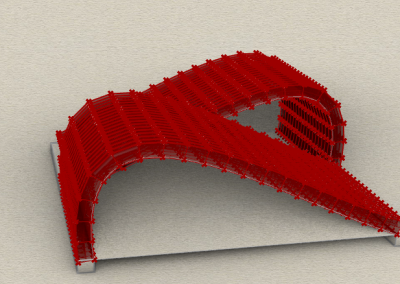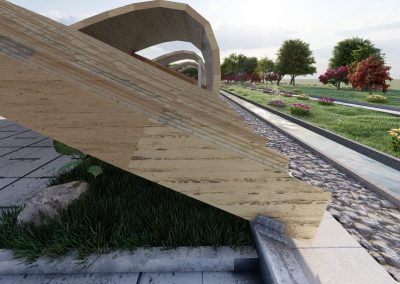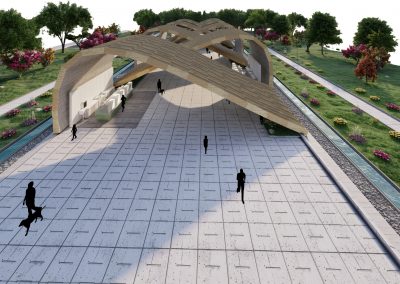Muz Yaprak Sapı Anatomisindeki Dayanım
Dirençlilik, felaket karşısında bile çevrelerinden “öğrenebilen” ve yaşamı sürdüren uyarlanabilir yapılar tasarlamak anlamına gelebilmektedir. Dirençlilik veya dayanıklık, doğuştan gelen bir uyarlanabilirlik kalitesi ile ilgilidir ve mimariyle bağlantılıdır. Bu doğrultuda kırılgan, hafif görünümüne rağmen dayanımı yüksek bir strüktür tasarlayabilmek için doğadan örnek alabileceğimiz mekanizmalar nelerdir? sorusu araştırılmıştır. Yaşamını idame ettirmek için doğada farklı adaptasyonlar geliştiren canlılar üzerinde incelemeler yapılmış ve muz yaprak sapının anatomik yapısındaki dayanım üzerinde durulmuştur.
Mekanik testlerin sonuçları, morfolojik inceleme ve manipülasyondan sonra oluşturulan yaprak sapı tasarımı ve işlevi hakkındaki fikirleri birçok yönden doğrulamıştır. Deney, içi boş tasarım ve uzunlamasına güçlendirme elemanları, düşük yoğunluklu ancak yüksek bükülme sertliğine sahip bir yapı üretmektedir. Yaprak saplarının oyuğu, bükülme sertliğini ve mukavemetini büyük ölçüde arttırmaktadır. Sonuç olarak, muz yaprak sapının birçok ayırt edici özelliğinin, fırtınalarda hem sert hem de deforme olma özelliğini tersine çevirme yeteneğini kazandıran akıllı entegre bir tasarım birleşimidir. İzole uzunlamasına güçlendirmeye sahip U şeklindeki dış kabuğu, onu hafif ama bükülme konusunda sert hale getirirken, yaprak sapının ventral eğriliği yaprağın etrafını sararak desteklemeye yardımcı olur. U şeklindeki içi boş kesitlerin birbirine eklemlenmesiyle esnek bir üst örtü yakalanmaya çalışılmıştır. Tasarım Rhino/ Grasshopper/Paneling Tools eklenti araçlarıyla dijital modele dönüştürülmüştür.
Strength in the Anatomy of Banana Petiole
Resilience can mean designing adaptive structures that can “learn” from their environment and sustain life even in the face of disaster. Resilience or durability is related to an inherent adaptability quality and is linked to the architecture. In this respect, what are the mechanisms that we can take as an example from nature in order to design a structure with high strength despite its fragile and light appearance? Researches have been made on the question and focused on the strength in the anatomical structure of the banana leaf stalk.
The results of mechanical tests confirmed in many ways the ideas about petiole design and function created after morphological examination and manipulation. The test, hollow design and longitudinal reinforcement members produce a structure with low density but high bending stiffness. Undoubtedly, the hollowness of the petioles greatly increases the bending stiffness and strength. As a result, it is the combination of many distinguishing features of the banana petiole in an intelligent integrated design that gives it the ability to reverse both hard and deformable in storms. Its U-shaped outer shell with isolated longitudinal reinforcement makes it light but rigid in bending, while the ventral curvature of the petiole wraps around the leaf to help support it. By articulating the U-shaped hollow sections to each other, a flexible top cover has been achieved. The design has been tried to be transformed into a digital model with Rhino / Grasshopper / Paneling Tools plugin tools.
© 2021 Istanbul Technical University Graduate School, Department of Informatics, Architectural Design Computing Program. All Rights Reserved




